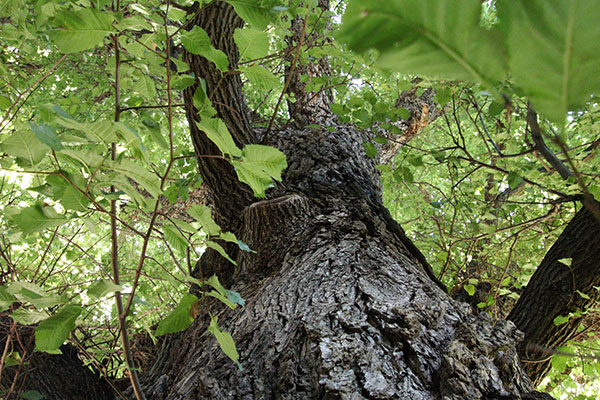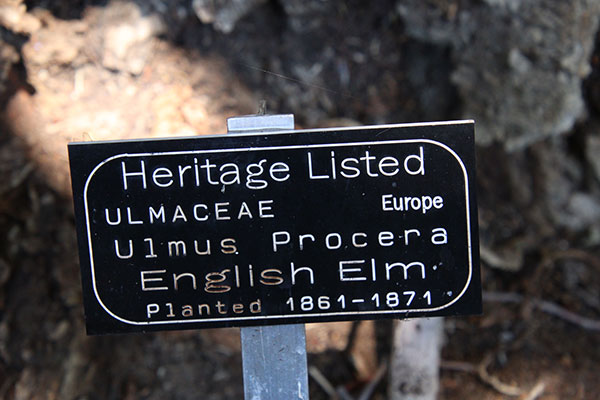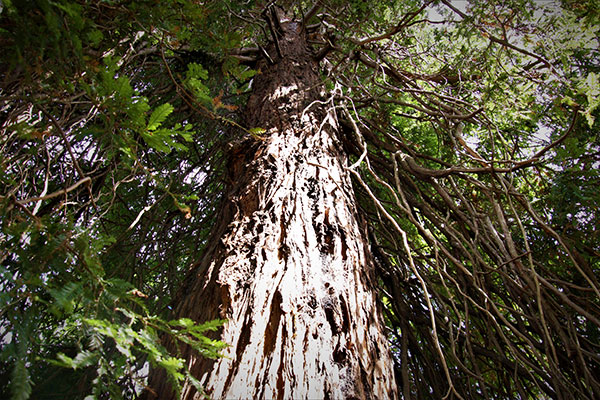Protecting our on-campus trees
The University has collected data on the number of trees and tree species across its campuses as part of Metrics 4 and 5 in the Biodiversity Baseline Data Project.
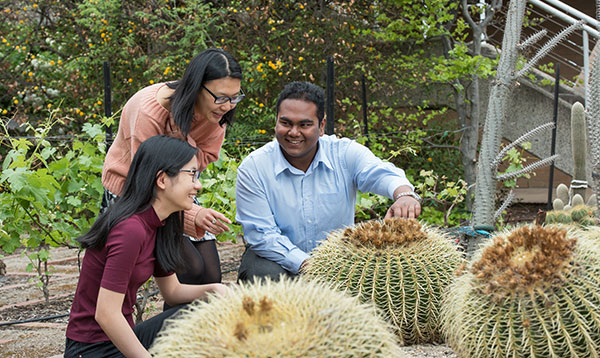
The Biodiversity Baseline Data Project
The project aspires to measure on-campus biodiversity through seven pioneering biodiversity metrics.
Completion of data collection for Metrics 4 and 5 is predicted for mid-2022 and will help us to better protect our urban forests.
Urban trees are vital for the health of our cities. Trees provide habitat for urban biodiversity, improve air quality, absorb sunlight and energy, and store carbon from our atmosphere.
The University of Melbourne strives to protect its urban forests and ensure the number of trees and tree species on campus remain above baseline levels. This means future infrastructure projects that remove trees must replace them. Adherence to this policy, will help the University maintain, or better yet, exceed the number of trees and tree species on campus.
View our Urban Tree Map and explore the urban forests located on our Parkville, Southbank, Burnley and Werribee campuses.
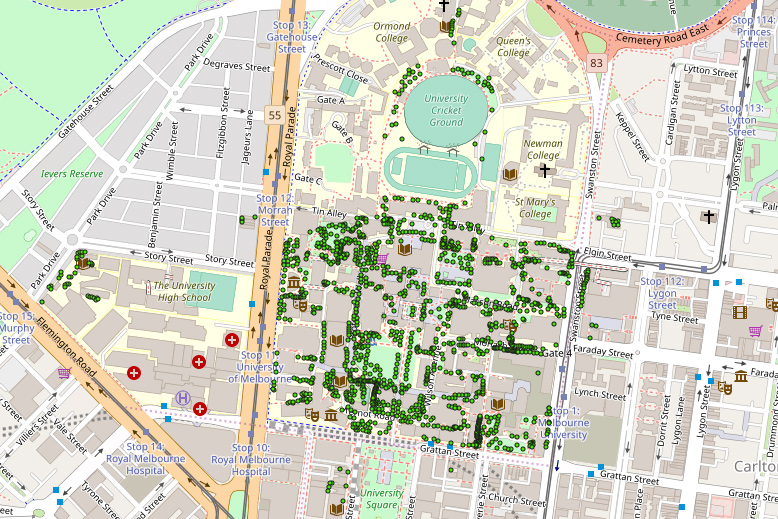

Using mapping software to create interactive tree maps
Existing tree data for our Burnley campus was analysed with the help of Biodiversity Intern and former Masters of Environment student, Ryan Fisher. By interning with the Sustainability Team, students are able to apply their data analysis skills to real-world projects.
Ryan’s analysis contributed to the Biodiversity Baseline Data Project, by calculating baselines for Metrics 4 and 5. These baselines will help us better understand our urban forests and will be used to generate new live tree inventory maps.
The tree maps will be used as a learning and engagement tool, providing information about the thousands of trees across our 7 campuses.
Most importantly, the maps will be updated in real time providing live updates of when and why trees have been removed from University grounds. This will help the University track which trees species have been lost and need replacing on campus.
Once collection and analysis of tree data is completed for all University campuses the new maps and data will replace our Urban Forest Map above.
Heritage listed trees at Burnley
Our campuses are home to a diverse range of tree species, including those that are heritage listed. Through his internship project, Biodiversity Intern Ryan Fisher, was able to identify a staggering 266 unique tree species from 46 different families at Burnley campus.
Three trees at Burnley campus are listed on the National Trust’s Register of Significant Trees. They are:
- Agathis robusta (Kauri Pine)
- Podocarpus elatus (Illawarra Plum)
- Quercus suber (Cork Oak).
Burnley campus also features six Heritage Victoria listed trees. They are:
- Agathis robusta (Kauri Pine)
- Quercus suber (Cork Oak)
- Two Ulmus procera (English Elms)
- Sequoia sempervirens (Coastal Redwood)
- Quercus robur (Common Oak).
With such precious and rare trees located on our campuses, the University has an important role to play in preserving Australia’s natural, cultural and indigenous heritage for future generations to enjoy.
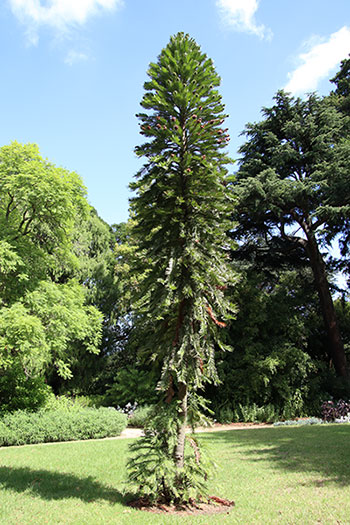
Our living fossil: The Wollemi pine
Did you know that Burnley campus is home to a tree species that is directly related to trees that existed over 60-million years ago? The Wollemia nobilis (Wollemi Pine) is a critically endangered native Australian species and was presumed extinct before it was rediscovered in 1994 in a rainforest gorge within the Blue Mountains, NSW.
Wollemi pine can reproduce by cloning themselves. The tree found at Burnley gardens may therefore be an exact replicate of a tree that once thrived in the Palaeocene period, millions of years ago!
